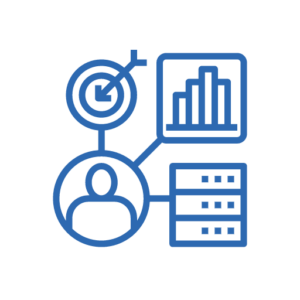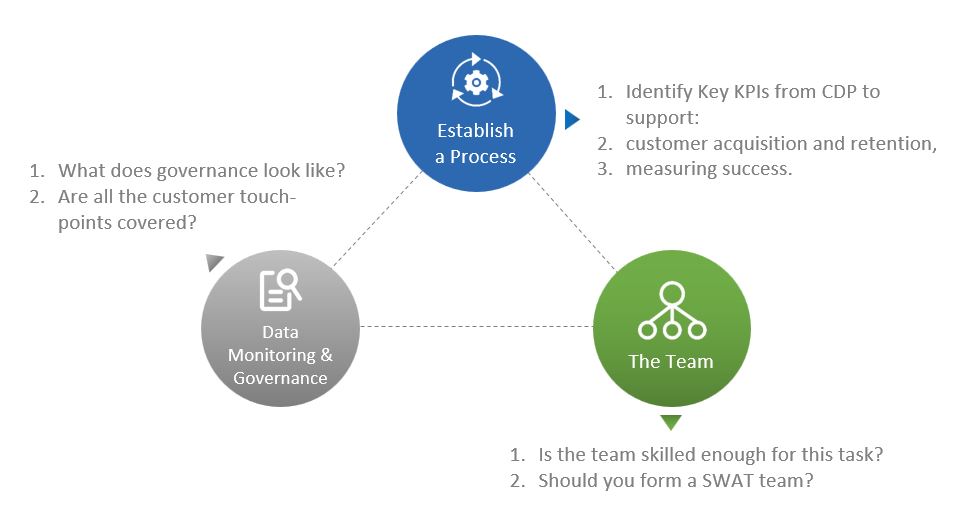The Customer Data Platform (CDP) solves the problems of disconnected and siloed customer data. It empowers you to identify, and offer the appropriate engagement to, the right customer at the right time. This is why CDPs are such a hot topic in marketing right now.
The CDP has seen significant gains in popularity in the last 2–3 years. Major players such as Tealium, Adobe, and Ensighten have invested heavily in their respective CDP solutions. The primary driver for the development of these data solutions is the need for real-time targeting across advanced user segments. Marketing departments want a CDP that allows them to target customers individually and personalize their experience across all the brand touchpoints in order to maximize engagement and lifetime value (LTV).
A CDP can be thought of as an integration of the Adtech and Martech ecosystems. If you need an introduction into what to expect from a CDP, see our previous article. Read on for a deeper dive into the key factors you need to consider before adopting a CDP.
Before buying and adapting any CDP solution, it is necessary to address several critical points to successfully leverage a CDP to drive your brand. Our Customer Data Platform Implementation Guide will walk you through these vital factors:
- Understanding the levers driving ROI for your CDP.
- Data governance and architecture.
- Data source integrations and brand touchpoints.
- Team skill sets.
1. Understanding the Levers Driving a Customer Data Platform’s ROI
1.1 New Ways of Connecting and Deploying Data. The data connectivity, unification, and the control over any individual customer profile provided by a CDP is unbeatable
1.2 Real-time Retargeting: When we implement a CDP solution, the real-time targeting feature works as a boon for marketers. It enables the Marketing Consultant to retarget the dropped off user within minutes through the Machine Learning-embedded technology. This has a direct impact on click-through rates (CTRs), conversions, and also improves the returning-customer ratio.
1.3 Risk Management and Mitigation: Data security is one of the biggest challenges for any industry. Achieving and maintaining regulatory compliance is non-negotiable, especially considering the hefty fines for GDPR and CCPA violations.
A CDP is built with data privacy at its core, ensuring encryption and control. By implementing a CDP, companies can meet data governance standards and ensure the seamless integration of tools, thus gaining more trust for their brand.
2. Data Governance and Architecture of a Customer Data Platform
There are multiple CDP options available in the market today. While evaluating the most appropriate CDP for your Martech and Adtech stack, keep the following in mind:
- How Enforcement on Activation functions in each CDP and how the profile classification and policy purpose labels help to support compliance.
How Enforcement on Activation Works
- What does Governance look like once data-usage restrictions are set? Governance should ensure that data-usage policy violations never happen. Any profiles or segments sent to a specific destination must be compatible with your Data Governance rules.
- Is a Custom Do Not Track feature available? Regulation in most regions specifies that users may opt-out of future tracking. Expect your CDP to support this and prevent infractions, and, therefore, financial penalties or a weakening of your brand.
3. Data Source Integrations and Brand Touchpoints
Another point to keep in mind is the number of integrations required to achieve the customer 360 view. This assessment assists in gauging the staff-hours necessary for setup and implementation. The more data sources you have, the more customizations are required for implementation.
Customer touchpoints for your brand also need detailed evaluation. At a minimum, it is helpful to establish both frequency and volume points, i.e., where your customer interacts the most and least.
While some customers provide a rich source of social media data (for many brands, this is where most of their active users reside), not all customers inhabit that space. If this is not accounted for while driving personalization campaigns on social sites, you risk not targeting your entire potential customer base. If some individuals’ data resides in a different database segment, this may impact both engagement and ROI.
4. Team Skill Sets Required to Leverage a Customer Data Platform
The final key consideration is the team who will be working with the CDP program. The right mix of people will ensure that your implementation is efficient. To establish your preparedness, you should be able to answer the following questions:
- What does the SWAT team look like?
- Can the current Data Warehouse team be upskilled?
- To what extent does the current tech stack support your campaign ambitions? If the current tech stack can support your campaigns, what are the pros and cons of moving to a CDP?
- Can the required capability be developed internally?
Being in a position to address these questions is vital when you are assessing a CDP solution. Failing to evaluate thoroughly may result in an underestimated quotation to the executive leadership team/s, and the project is in danger of always being understaffed and, therefore, not seeing its full ROI.
Conclusion
Investing in a 2–3-week discovery phase at the planning and solution design stage is a vital step when you are considering adopting a CDP. By addressing the key factors that we have highlighted here, you are well-positioned to ensure that you make a fact-based decision around whether to on-board a CDP and which CDP to commit to. This discovery phase plays an important role in the lifecycle of a CDP in any organization.
In the next article, we will explain how companies can use CDPs for personalization.
Disclaimer – Declaration of interest
We are not impartial observers of the CDP market and the impact on our customer’s regulatory environment. Here at e-CENS, we are CDP specialists, offering expertise in selecting and tailoring our client’s CDP solutions.
If you are ready to take a deep dive into which CDPs integrate best with your current Marketing and Technology stacks, contact us. We support the end-to-end cycle of adopting CDPs, from discovery to identifying and implementing the tech stack to support your consumer targeting – and the regular maintenance of these tools.








